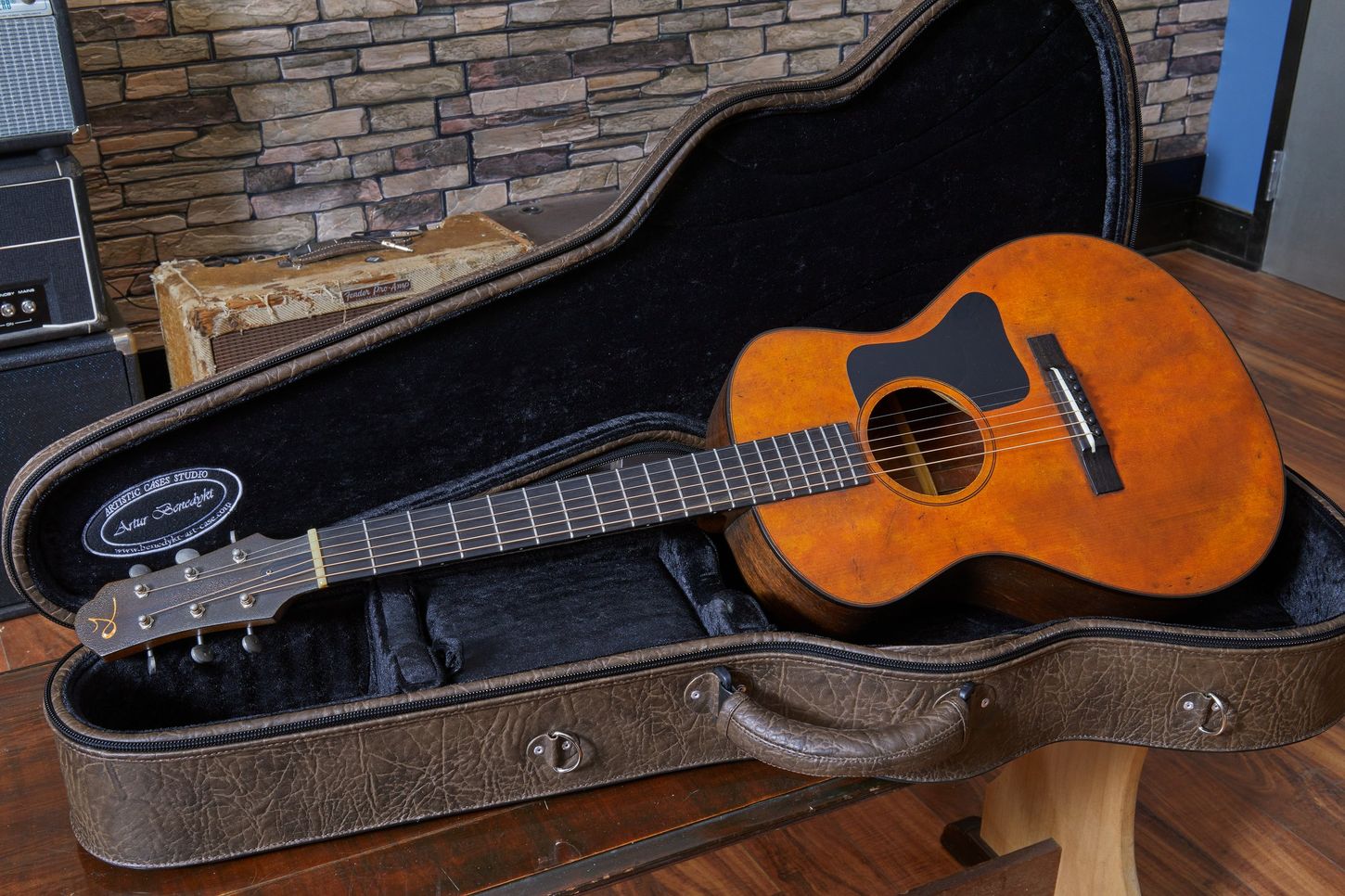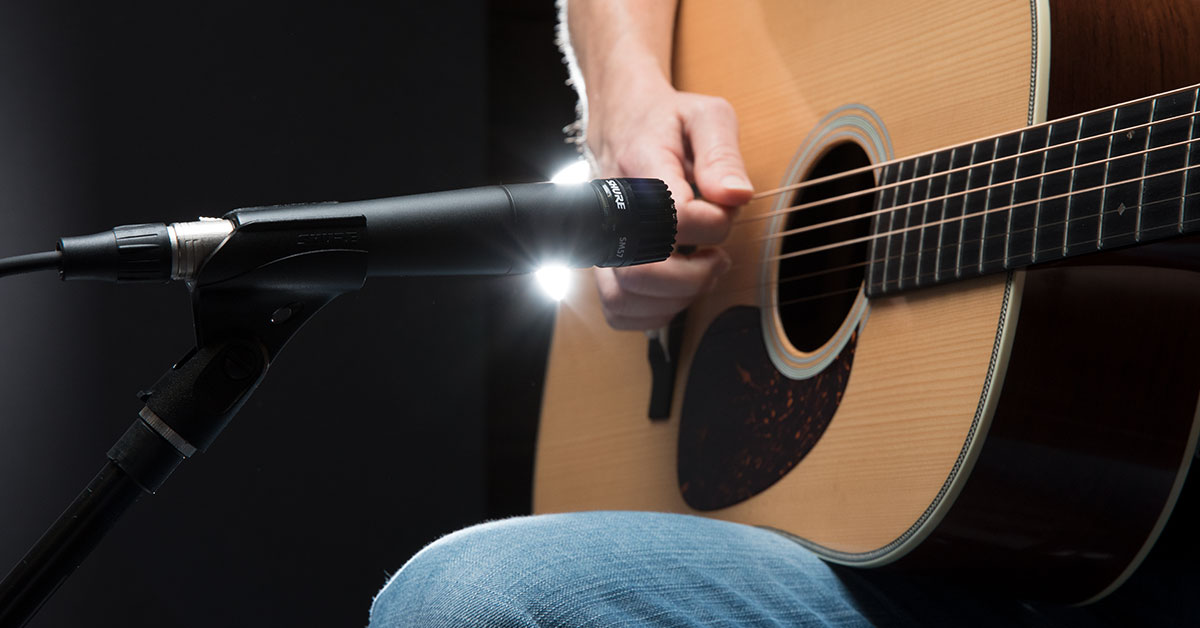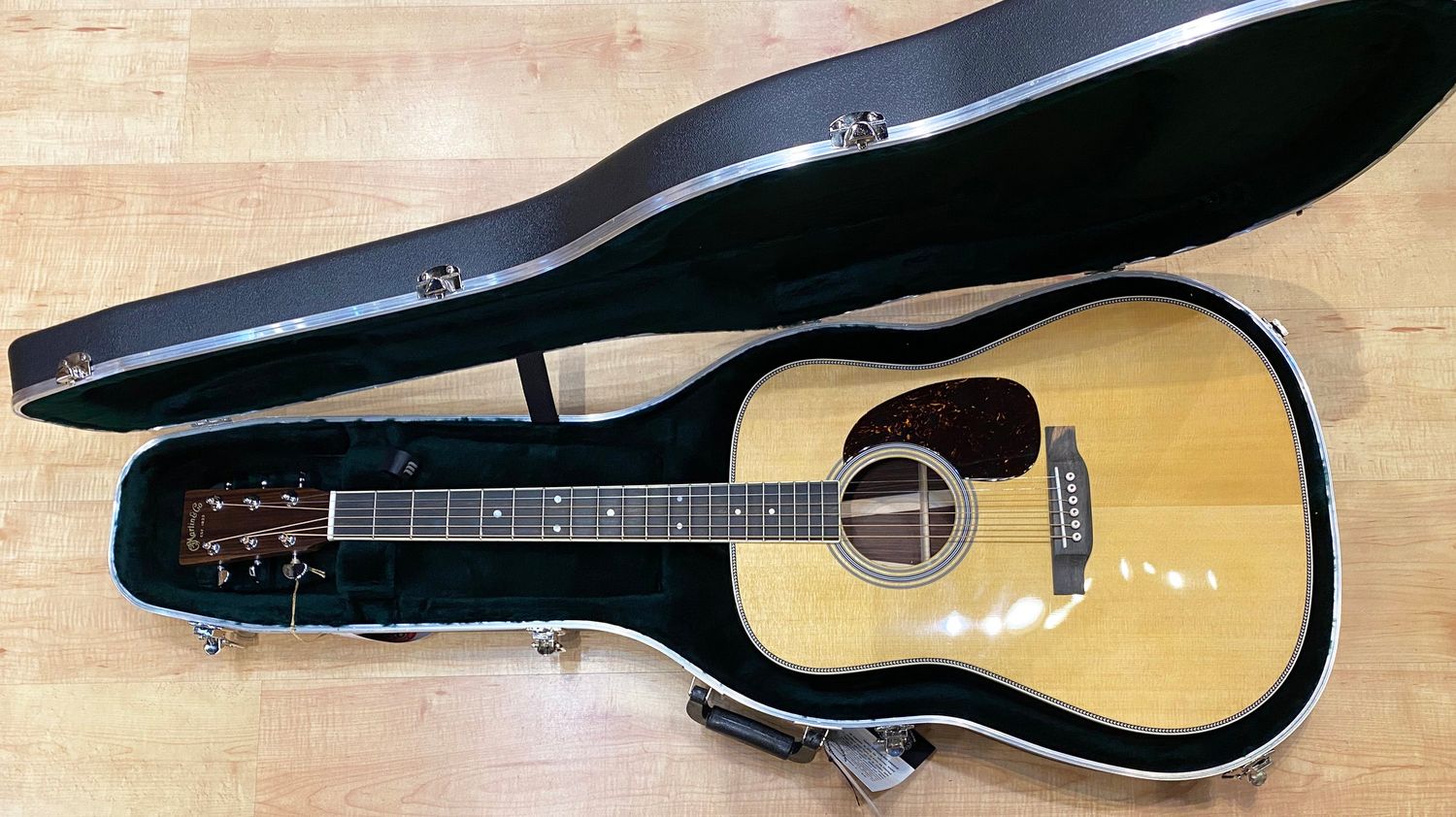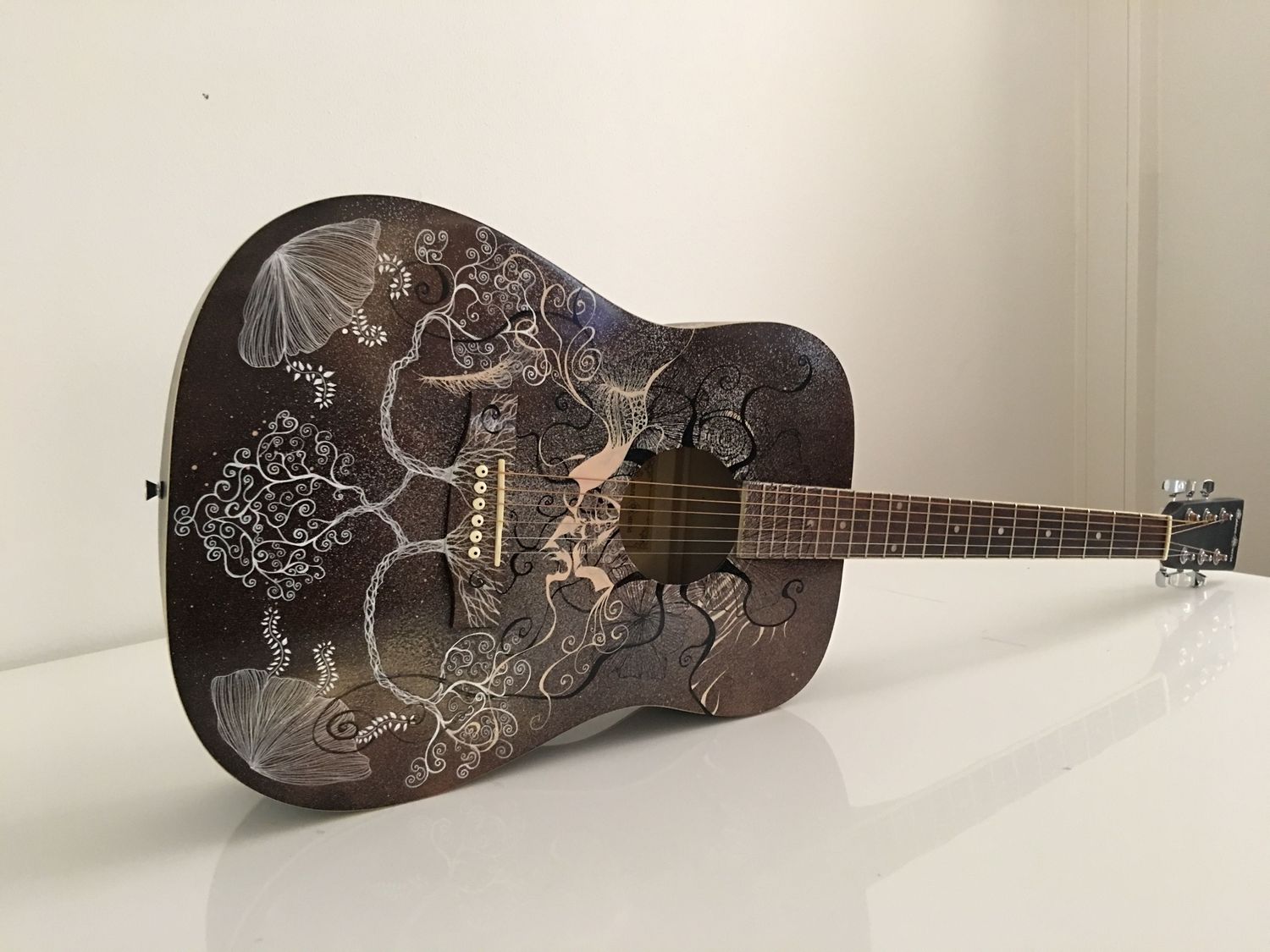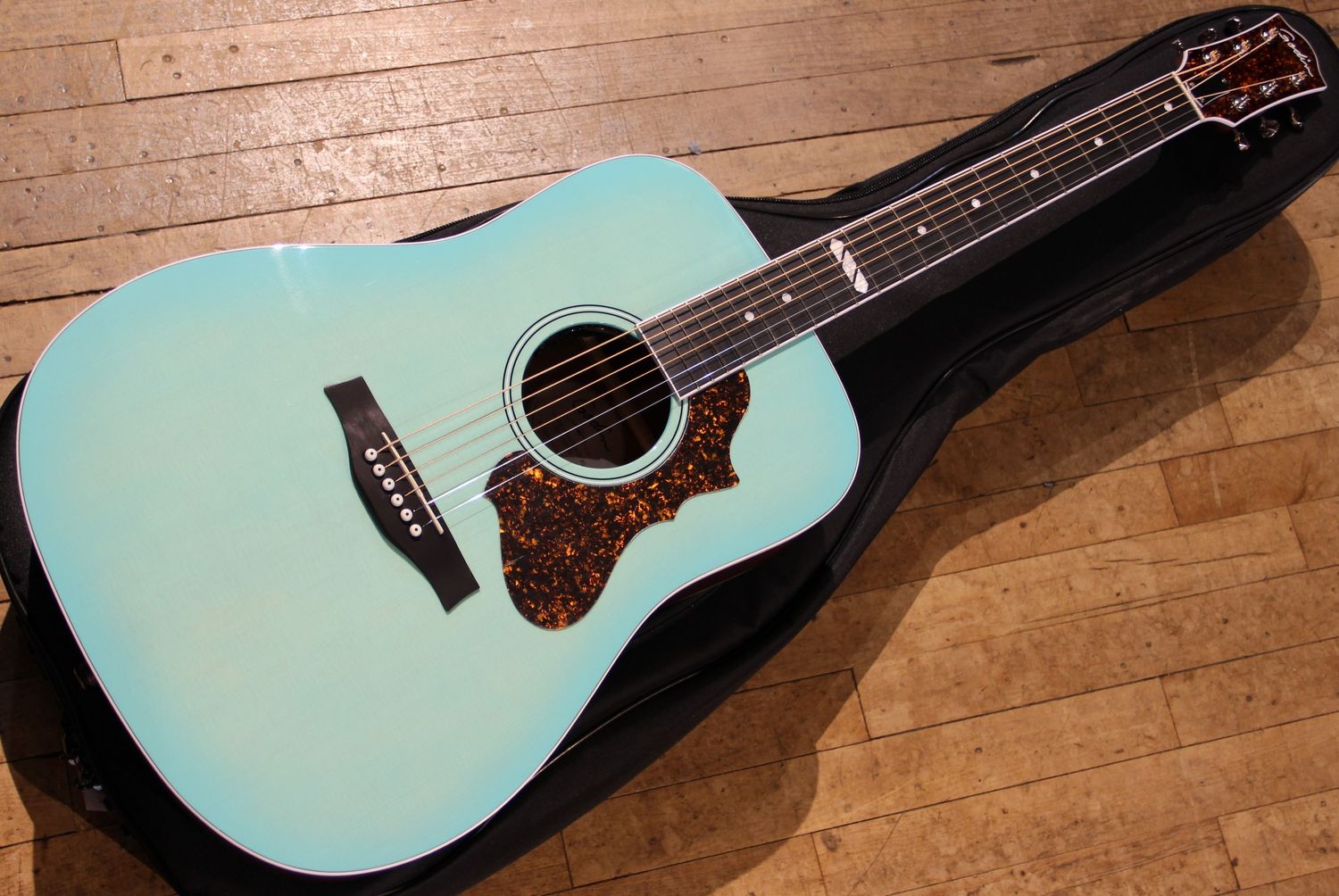Home>Production & Technology>Acoustic>How To Hold An Acoustic Guitar


Acoustic
How To Hold An Acoustic Guitar
Published: March 11, 2024
Learn the proper technique for holding an acoustic guitar to improve your playing and prevent strain. Discover essential tips and best practices for a comfortable and effective grip.
(Many of the links in this article redirect to a specific reviewed product. Your purchase of these products through affiliate links helps to generate commission for AudioLover.com, at no extra cost. Learn more)
Table of Contents
Introduction
When it comes to playing the acoustic guitar, holding the instrument correctly is fundamental to producing beautiful music. The way you hold the guitar not only affects your playing technique but also influences the sound quality. Whether you are a beginner or an experienced guitarist, mastering the art of holding an acoustic guitar is crucial for a comfortable and enjoyable playing experience.
The position in which you hold the guitar can significantly impact your ability to reach the frets, execute chords, and strum with ease. Additionally, the way you hold the guitar neck and position your fingers on the fretboard can greatly influence the clarity and resonance of the notes you produce. Therefore, understanding the proper techniques for holding an acoustic guitar is essential for any aspiring musician.
In this comprehensive guide, we will delve into the intricacies of holding an acoustic guitar, covering everything from choosing the right position to mastering strumming and picking techniques. By the end of this article, you will have a solid grasp of the foundational principles of holding an acoustic guitar, empowering you to elevate your playing skills and musical expression.
So, let's embark on this enlightening journey and unravel the secrets of holding an acoustic guitar with confidence and finesse. Whether you aspire to strum soothing melodies by the campfire or captivate audiences with soul-stirring performances, the knowledge and techniques you will gain from this guide will undoubtedly set you on the path to becoming a proficient acoustic guitarist.
Choosing the Right Position
The first step in mastering the art of holding an acoustic guitar is choosing the right position. Proper positioning not only ensures comfort and ease of play but also contributes to the overall sound quality. Whether you are sitting or standing, the way you position the guitar will significantly impact your playing experience.
Sitting Position
When sitting, it's essential to find a chair without arms to allow for unrestricted movement. Sit up straight, ensuring your back is supported but not rigid. Place the lower curve of the guitar's body on your right thigh (for right-handed players) or left thigh (for left-handed players). The guitar should rest comfortably against your body, with the neck pointing slightly upward.
Standing Position
If you prefer to play while standing, using a guitar strap is crucial for maintaining stability and comfort. Adjust the strap to a length that allows the guitar to rest at a comfortable height, ensuring that it is neither too high nor too low. The goal is to position the guitar in a way that allows for easy access to the frets while maintaining a relaxed posture.
Finding Your Comfort Zone
Regardless of whether you choose to sit or stand, it's important to find a position that feels natural and allows for unrestricted movement. Experiment with different angles and heights until you find a comfortable and balanced position. Remember, the right position is not only about ergonomics but also about creating a conducive environment for expressing your musical creativity.
By paying attention to the nuances of positioning, you set the stage for a fulfilling and enjoyable playing experience. With the right position established, you are ready to delve into the finer details of holding the guitar neck, placing your fingers on the fretboard, and mastering strumming and picking techniques.
Now that you have mastered the art of choosing the right position, let's explore the next crucial aspect of holding an acoustic guitar: holding the guitar neck.
Holding the Guitar Neck
The way you hold the guitar neck plays a pivotal role in your ability to navigate the fretboard and execute chords with precision. It directly impacts your hand positioning, finger reach, and overall dexterity while playing the acoustic guitar. Mastering the art of holding the guitar neck is essential for achieving fluidity and control in your playing.
Hand Placement
When holding the guitar neck, your fretting hand should be positioned in a manner that allows your fingers to effortlessly reach and press down on the strings. Place your thumb on the back of the neck, opposite your fingers. The thumb acts as a support, allowing your fingers to move freely and exert the necessary pressure on the fretboard. Avoid gripping the neck too tightly, as this can hinder your finger movement and cause unnecessary strain.
Finger Placement
As you position your hand on the guitar neck, ensure that your fingers are poised to reach the frets comfortably. Each finger should be positioned directly behind the fret it intends to press down on, minimizing the effort required to produce clear and resonant notes. Maintaining a relaxed yet controlled grip on the neck enables you to transition between chords smoothly and execute intricate fingerpicking patterns with ease.
Alignment and Posture
In addition to hand and finger placement, maintaining proper alignment and posture while holding the guitar neck is crucial. Your wrist should be relatively straight, allowing for optimal finger movement and minimizing the risk of strain or discomfort. Keep your forearm parallel to the neck, creating a balanced and stable foundation for fretting chords and executing melodic phrases.
Adaptation to Chord Changes
As you progress in your guitar journey, you will encounter various chord shapes and progressions. Adapting your hand positioning and grip on the guitar neck to accommodate different chords is essential for seamless transitions and maintaining a consistent sound quality. Practice transitioning between chords while paying close attention to your hand and finger placement, ensuring that each chord is executed cleanly and without unnecessary tension.
Mastering the art of holding the guitar neck is a continuous process that evolves as you refine your playing technique and repertoire. By paying attention to hand and finger placement, maintaining proper alignment and posture, and adapting to different chord shapes, you pave the way for a more fluid and expressive guitar playing experience.
With a solid grasp of holding the guitar neck, you are now equipped to explore the next crucial aspect of acoustic guitar mastery: placing your fingers on the fretboard.
Placing Your Fingers on the Fretboard
Placing your fingers on the fretboard is a fundamental aspect of playing the acoustic guitar. The way you position and maneuver your fingers directly influences the clarity, tone, and fluidity of the notes and chords you produce. Whether you are executing intricate melodies or strumming vibrant chords, mastering the art of placing your fingers on the fretboard is essential for achieving a rich and resonant sound.
Finger Numbering System
Before delving into the specifics of finger placement, it's important to familiarize yourself with the finger numbering system commonly used in guitar playing. In this system, the fingers of your fretting hand are assigned numbers as follows:
- Index finger: 1
- Middle finger: 2
- Ring finger: 3
- Pinky finger: 4
Understanding this numbering system provides a clear framework for referencing finger placement and executing chords and melodies with precision.
Proper Finger Placement for Chords
When playing chords, each finger must be positioned on the appropriate fret and string to produce a harmonious and resonant sound. For example, when forming a basic open C major chord, your ring finger is placed on the third fret of the fifth string, your middle finger on the second fret of the fourth string, and your index finger on the first fret of the second string. Ensuring that each finger is positioned directly behind the fret and exerts sufficient pressure on the string is crucial for achieving a clear and vibrant chord.
Finger Independence and Dexterity
Developing finger independence and dexterity is essential for navigating the fretboard with agility and precision. Practicing exercises that focus on individual finger strength and coordination can significantly enhance your ability to place your fingers on the fretboard with ease. Additionally, incorporating scales and fingerpicking patterns into your practice routine can further refine your finger placement and dexterity, allowing you to effortlessly traverse the fretboard and execute melodic passages with finesse.
Embracing Muscle Memory
As you dedicate time to practicing and refining your finger placement on the fretboard, you will gradually develop muscle memory, enabling your fingers to instinctively find the right positions for various chords and notes. This muscle memory is cultivated through consistent and deliberate practice, ultimately empowering you to transition between chords and execute melodies with fluidity and confidence.
Precision and Consistency
Consistency in finger placement is paramount for achieving a uniform and resonant sound across different chords and melodies. Paying attention to the angle and positioning of your fingers, as well as the pressure exerted on the strings, ensures that each note rings out clearly and contributes to the overall musical expression.
By honing your ability to place your fingers on the fretboard with precision and consistency, you lay the foundation for a rewarding and expressive guitar playing experience. Embracing the nuances of finger placement and leveraging the power of muscle memory and dexterity, you embark on a journey of musical discovery and creative expression through the acoustic guitar.
With a solid understanding of finger placement on the fretboard, you are now poised to explore the intricate techniques of strumming and picking, further enriching your acoustic guitar journey.
Strumming and Picking Techniques
Mastering strumming and picking techniques is essential for unlocking the full potential of the acoustic guitar and adding depth and dynamics to your playing. Whether you aspire to strum captivating rhythms or weave intricate melodies, honing your strumming and picking skills is a transformative journey that elevates your musical expression.
Strumming
Strumming forms the rhythmic backbone of many acoustic guitar compositions, infusing energy and emotion into the music. The way you wield the pick and strike the strings directly influences the texture and groove of the music. Understanding the nuances of strumming techniques empowers you to create captivating rhythms and bring your musical ideas to life.
Pick Grip
The first step in mastering strumming is achieving a comfortable and controlled pick grip. Hold the pick between your thumb and index finger, allowing a small portion of the pick to extend beyond your fingers. Finding a balance between a firm grip and flexibility enables you to execute precise strumming patterns while maintaining a fluid and relaxed motion.
Strumming Patterns
Exploring various strumming patterns opens up a world of rhythmic possibilities. From the foundational downstroke strum to intricate patterns incorporating upstrokes, accents, and syncopated rhythms, each strumming pattern adds a unique flavor to your playing. Practice different patterns with a metronome to develop a strong sense of timing and groove.
Dynamics and Control
Mastering dynamics in strumming is key to conveying emotion and intensity in your playing. Experiment with varying degrees of force and velocity, transitioning from gentle, subdued strums to powerful, resonant strokes. Achieving control over dynamics allows you to shape the musical narrative and imbue each note with intention and expression.
Picking
Picking, also known as fingerpicking, introduces a melodic and intricate dimension to acoustic guitar playing. By using your fingers to pluck the strings, you can create mesmerizing arpeggios, intricate melodies, and cascading harmonies. Developing proficiency in picking techniques expands your sonic palette and enriches your musical repertoire.
Fingerstyle Technique
Embracing fingerstyle technique involves using your fingertips to pluck the strings, allowing for greater precision and articulation. Each finger is assigned to specific strings, enabling you to create complex and layered melodies. Practice exercises that focus on finger independence and coordination to enhance your fingerstyle prowess.
Hybrid Picking
Hybrid picking combines the use of a pick and fingers, offering a versatile approach to playing the acoustic guitar. By seamlessly integrating pick strokes with finger plucking, you can achieve a rich and dynamic sound that blends the clarity of picked notes with the warmth of finger-plucked tones. Experiment with hybrid picking to discover new textures and tonal possibilities.
Arpeggios and Patterns
Exploring arpeggios and picking patterns unlocks a world of melodic potential. By traversing chord shapes and arpeggiating individual notes, you can create captivating sequences and embellishments that enhance the harmonic richness of your playing. Delve into arpeggio exercises and pattern-based picking to expand your melodic vocabulary and dexterity.
Embracing Versatility
Mastering strumming and picking techniques equips you with the versatility to navigate diverse musical styles and genres. Whether you are delving into folk, blues, rock, or classical guitar, the ability to fluidly transition between strumming and picking opens doors to endless creative possibilities. Embrace the journey of refining your strumming and picking skills, and let the music guide you toward new horizons of artistic expression.
With a solid foundation in strumming and picking techniques, you are poised to embark on a musical odyssey filled with rhythmic vitality, melodic intricacies, and boundless creativity. As you continue to hone these techniques, your acoustic guitar playing will flourish, resonating with the depth and soulful resonance that defines a true musical journey.
Conclusion
In conclusion, mastering the art of holding an acoustic guitar encompasses a multifaceted journey that intertwines technical proficiency with creative expression. From choosing the right position to honing strumming and picking techniques, each aspect of holding an acoustic guitar contributes to the holistic development of a guitarist's skill set and musical identity.
By understanding the nuances of choosing the right position, guitarists lay the groundwork for a comfortable and sustainable playing experience. Whether seated or standing, finding a balanced and ergonomic position sets the stage for unhindered creativity and musical exploration. The symbiotic relationship between the guitarist and the instrument is forged through thoughtful positioning, allowing for seamless interaction with the fretboard and strings.
Furthermore, the art of holding the guitar neck is a cornerstone of fretting hand dexterity and control. By mastering hand and finger placement, aspiring guitarists empower themselves to navigate the fretboard with precision and grace. The alignment of the wrist, the placement of the thumb, and the adaptability to chord changes form the building blocks of a solid foundation for fretting chords and executing melodic passages.
Placing fingers on the fretboard is a pivotal aspect of translating musical ideas into tangible expressions. Through the cultivation of muscle memory, precision, and consistency, guitarists harness the potential of the fretboard, creating harmonious chords and captivating melodies. The journey of mastering finger placement is a testament to the dedication and artistry that define the pursuit of acoustic guitar mastery.
Finally, the exploration of strumming and picking techniques opens doors to rhythmic vitality and melodic intricacies. From the dynamic nuances of strumming patterns to the evocative textures of fingerstyle picking, guitarists embark on a journey of sonic discovery and expressive depth. The fusion of strumming and picking techniques empowers musicians to traverse diverse musical landscapes, embracing versatility and creativity in their playing.
In essence, the art of holding an acoustic guitar transcends technical proficiency, evolving into a profound form of self-expression and artistic communication. Aspiring guitarists who embark on this transformative journey not only refine their playing skills but also cultivate a deep and enduring connection with the instrument. Through dedication, practice, and unwavering passion, the art of holding an acoustic guitar becomes a conduit for personal growth, musical storytelling, and the timeless resonance of acoustic melodies.



